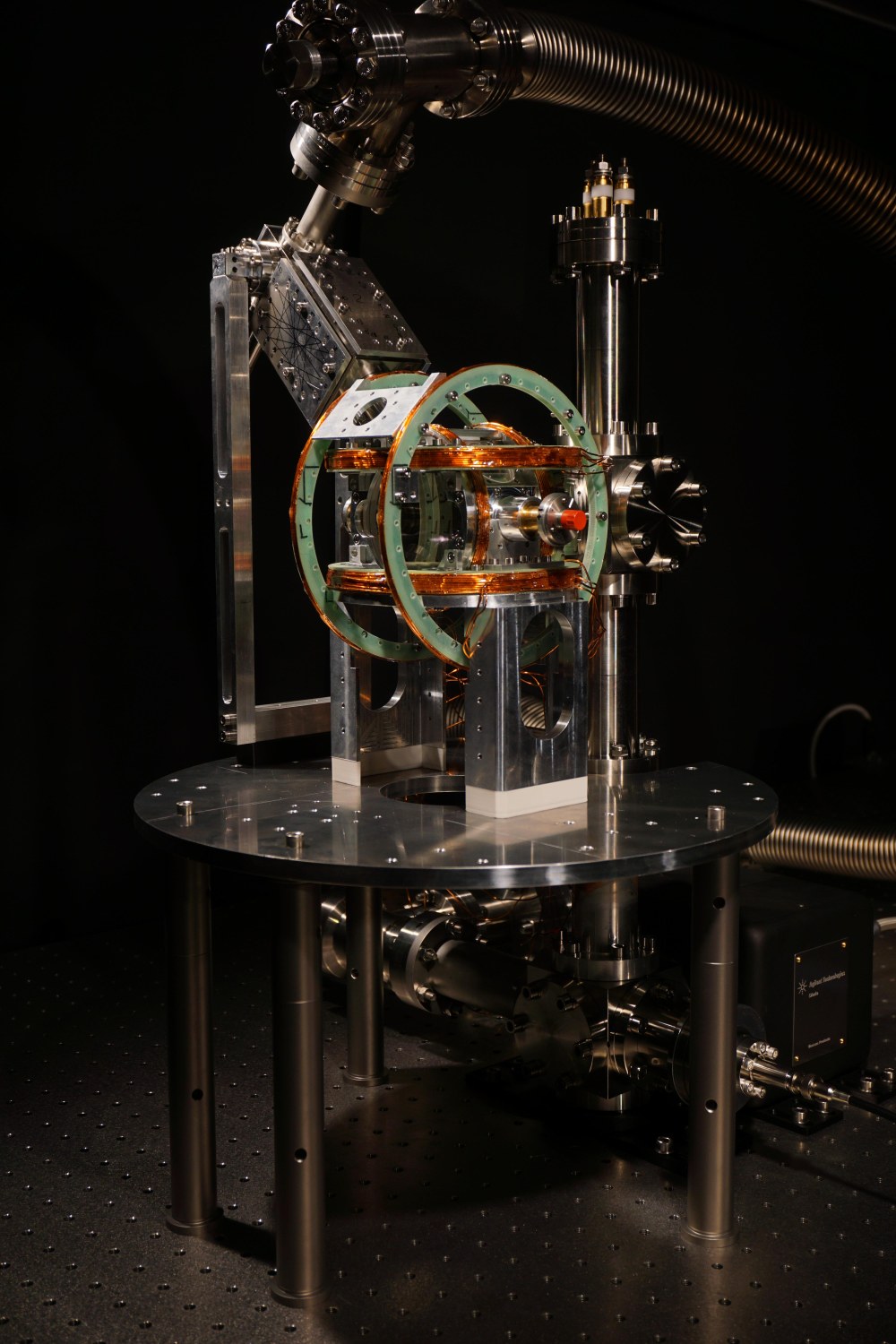INTENTAS
Atom interferometers are versatile tools for measuring inertial forces and will be deployed in the future application on Earth and in space. However, their sensitivity is limited by the Standard Quantum Limit. The INTENTAS project aims to overcome this limitation by entanglement of the atoms. The goal is to integrate this technique into a compact and robust system for future satellite missions. Experimentation and testing will take place in the Einstein-Elevator in Hannover, where anticipated freefall times of over 4 seconds already promise to shed light on aspects of General Relativity and probe our understanding of quantum mechanics.

S. P. Haase / Leibniz University Hannover (all rights reserved)
The INTENTAS project, a joint project between the Institute for Satellite Geodesy and Inertial Sensing, Leibniz University Hannover, Ferdinand-Braun-Institute in Berlin, Humboldt University Berlin, TU Darmstadt, and University of Ulm, aims to improve atom interferometers towards unprecedented accuracy for future deployment in microgravity environments.
Atom interferometers are high-resolution measurement tools used to gauge inertial forces such as acceleration, rotation, and gravity. In this technique, atoms are placed in a quantum mechanical superposition of two states during free fall. The interference between these states produces the measurement signal of the interferometer. The resolution of the measurement increases with the number of atoms present and the duration of their superposition state. Ultracold atoms in Bose-Einstein condensates (BECs), as employed in the INTENTAS project, are particularly suitable for long interrogation times and high particle densities.
The interrogation time, the time during which the atoms are free falling, is limited to a few milliseconds due to gravity. To increase these interrogation times one can either increase the size of the atom interferometer or change to an operation in space. The INTENTAS project has chosen the Einstein Elevator at HITec in Hannover as the testing ground. Here, controlled acceleration followed by free fall reduces the Earth's gravitational pull to one-millionth of its value, extending the available interrogation time to over 4 seconds.
However, the achievable precision depends not only on the duration of the interferometer but also on several technical parameters and finally a fundamental limitation called the Standard Quantum Limit. This limitation, associated with the number of particles, states that a tenfold improvement in resolution requires a hundredfold increase in atom count. As the available particle number is technically restricted, an increase in precision becomes increasingly difficult.
The Standard Quantum Limit can only be surpassed by creating entangled atom clouds and use them for the interferometric sequence. This way strong correlations are created between the atoms, allowing to "squeeze" the quantum noise below the Standard Quantum Limit. Maximum entanglement enables a resolution improvement in the atom interferometer directly proportional to the particle count (10 times more particles, 10 times better resolution).
Until now, the technologies for generating entanglement with atoms have only been developed in elaborate dedicated laboratory experiments that often occupy an entire optical table and additional space.
The INTENTAS project aims to integrate this technology into a compact and robust atomic sensor and demonstrate its suitability for microgravity conditions through operation in the Einstein Elevator. The main objective is to prove interferometric sensitivity beyond the Standard Quantum Limit in microgravity.
If successful, this achievement would mark a significant step toward future utilization of high-precision interferometers in space. Further substantial sensitivity enhancements are expected when atom interferometry can be deployed in Earth's orbit, where practically unlimited free fall times can be achieved.
Once the technology has been successfully tested, it could aid direct applications in high-precision atom interferometry, such as satellite-based and terrestrial Earth observation and navigation.
Already the measurements planned within the INTENTAS project at the Einstein Elevator hold promise for exploring the dynamics of quantum entangled atomic clocks during free fall. Furthermore, they enable the verification of coherence of quantum states over long durations, allowing assessments of the validity of quantum mechanics, including tests of the theory of continuous spontaneous localization.
Project contributors
- German Aerospace Center, Institute for Satellite Geodesy and Inertial Sensing (Hannover)
- Leibniz University Hannover
- Ferdinand-Braun-Institut in Berlin
- Humboldt-Universität zu Berlin
- TU Darmstadt
- Universität Ulm
